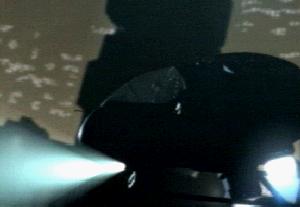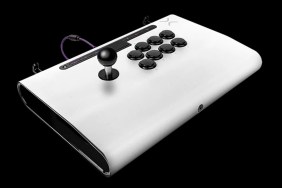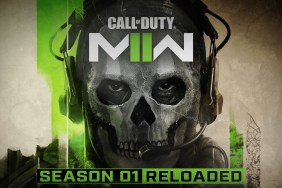From the halls of eastern Balkr dome…
After wrenching control back from the corporations to the rightful government
in the last game (see G-Police),
the G-Police were left wounded. This gave the various crime syndicates
a chance that they took wholeheartedly. You see, during the whole confusion
of the corporate wars, they’d been stockpiling weapons, ships, gunboats, and
any other kind of thing that went “bang”. You, as one of the G-Police
pilots, have to turn the tables on them, again regaining control.
It
never ends, does it? First you have to win a war against the world’s corporations,
now you have the crime syndicate on you tail. Such is the world you’re thrown
into in G-Police: Weapons of Justice. Despite some graphics glitches
and touchy controls, it’s a fun and exciting game.
G-Police: Weapons of Justice is presented in a series of missions. Each
mission has the standard set of Primary and Secondary tasks. You have to complete
the primary objectives in order to proceed in the game. These normally consist
of destroying a building/fleet of fighters/gunboat/turrets (choose one), or
keeping them from destroying your wingmen, or something that has to do with
guns and explosions. There is some variance in the mission structure, however.
First, there are some nonstandard tasks, like trying to keep low, so you’re
not detected. Second, there are some interesting twists thrown at you in the
middle of the mission, like having your sensors hacked (Which happens a lot
more than you’d think. Why don’t they just put some sort of encryption thingy
on it or something?).
An interesting addition is the bonus games you can open up by completing both
the Primary and Secondary objectives. These normally take the form of races
and the like, and they are fairly entertaining. Not a major addition, it’s true,
but it’s a little diversion from the seriousness of the main storyline.
The actual gameplay is a mixed bag, but for the most part entertaining. You
pilot one of five vehicles, although you don’t have a choice of which one to
use. Each of them is equipped with Primary and Secondary weapons (There are
a lot of Primaries and Secondaries, aren’t there). There are normally several
different secondary weapons, ranging from air to air missiles, to bombs, to
your wingmen. The game screen is full of data for the mission. Some would say
full, others would say cluttered. Almost every part of the screen has something
you have to look at. In order to make it easier to see the actual world, all
of the controls were made transparent. But, even with that, the screen can be
confusing.
 For
For
your convenience, they’ve added a waypoint indicator in the middle of the display
so that you know where you’re supposed to go. For the most part it’s useful,
but when it doesn’t point to your next mission requirement (for example, your
wingmen ask for help, but it still targets what you were shooting at) it can
get really confusing. All you have is a radar screen and a map, which shows
too much of what you don’t’ need (i.e. all of the other areas in the world)
and too little of what you do need (i.e. where all of the things your supposed
to protect are). Thus, it’s hard to tell where you have to go next at some points
in the game.
The graphics are pretty good, within a certain area of your ship. All the
nearby explosions, laser bolts, ship models, and other graphical bits are good
looking and well done, if not a bit grainy. Outside that area, however, things
are black. You can’t see much more than 100 meters in front of your face. They’ve
tried to soften the blow by drawing large 3D boxes around buildings that are
just out of sight, so you still know where they are, but all this does is make
it look more unnatural and Tron-like. Also, Slowdown can be a problem
in dogfights. With all the cool things to look at, the Playstation doesn’t have
the power to keep up the framerate.
The controls for G-Police: Weapons of Justice have been simplified
since the first installment. Now your craft will automatically float in midair,
without having to hold down any buttons. You can move straight in five out of
six directions: forward, backward, left, right, and up. Besides the fact that
they left out down (Why? What did down ever do to them?), the strafe left and
right are too slow, and not too useful. If you’re using the Dual-shock controller,
you’ll have to get used to the analog sticks, since they’re very sensitive.
If you press the turn stick all the way to the right, your craft will spin faster
than a frog in a blender (sorry, bad analogy). This is not necessarily a bad
thing once you get used to it. With practice you can turn just the right amount,
while still having a large range of motion. But, for the uninitiated, it can
be a pain to learn.
On the whole, G-Police is a fun action shooter. You got your big weapons,
big enemies, and big explosions, along with some fast flying and shooting. If
only they’d worked on the navigation stuff, easy to learn controls, and that
weird simulation-like popup, they would have had a much better game.

-
Entertaining missions
-
Reasonable Controls once you learn
-
Steep learning curve on controls
-
Confusing mission objectives and maps
-
Annoying popup










